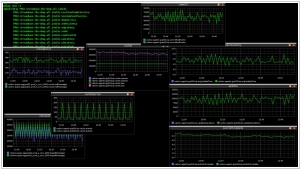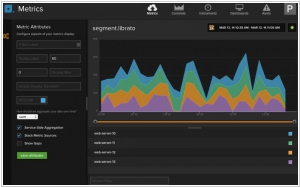Graphite vs Librato
June 03, 2023 | Author: Michael Stromann
4

Graphite is an enterprise-ready monitoring tool that runs equally well on cheap hardware or Cloud infrastructure. Teams use Graphite to track the performance of their websites, applications, business services, and networked servers. It marked the start of a new generation of monitoring tools, making it easier than ever to store, retrieve, share, and visualize time-series data.
2

One platform, unlimited metrics. Monitoring Zen. We get your data flowing to us from anywhere, whether it's through our API, a turn-key solution, or one of our many open source collection agents. Turn your raw data into intuitive metrics with our powerful composite metric defi-nitions. Owned by SolarWinds.
Graphite and Librato are two popular tools used for monitoring and visualizing metrics, but they have some key differences in their approach and capabilities.
Graphite is an open-source software platform that is widely used for time-series data storage and visualization. It is highly customizable and flexible, allowing users to collect, store, and graph metrics from various sources. Graphite excels in its ability to handle large volumes of data and offers a range of powerful graphing and rendering options. It provides a scalable and efficient solution for monitoring metrics over time, making it popular among developers and operations teams.
Librato, on the other hand, is a cloud-based monitoring and analytics platform that offers a more streamlined and user-friendly experience. It provides a unified interface for collecting, visualizing, and analyzing metrics from various sources. Librato offers built-in integrations with many popular data sources and supports real-time data processing. It also provides advanced features like anomaly detection, alerting, and collaborative sharing of dashboards and visualizations.
See also: Top 10 IT Monitoring software
Graphite is an open-source software platform that is widely used for time-series data storage and visualization. It is highly customizable and flexible, allowing users to collect, store, and graph metrics from various sources. Graphite excels in its ability to handle large volumes of data and offers a range of powerful graphing and rendering options. It provides a scalable and efficient solution for monitoring metrics over time, making it popular among developers and operations teams.
Librato, on the other hand, is a cloud-based monitoring and analytics platform that offers a more streamlined and user-friendly experience. It provides a unified interface for collecting, visualizing, and analyzing metrics from various sources. Librato offers built-in integrations with many popular data sources and supports real-time data processing. It also provides advanced features like anomaly detection, alerting, and collaborative sharing of dashboards and visualizations.
See also: Top 10 IT Monitoring software


